Hello everyone,
I prepared this request a long time ago, but I could not mobilise myself somehow to put it here,
hope that information about this airplane will be useful for someone.
Fairey III - The airplane of both wars.https://en.wikipedia.org/wiki/Fairey_IIIhttps://www.militaryfactory.com/aircraft/detail.asp?aircraft_id=920Fairey IIIF
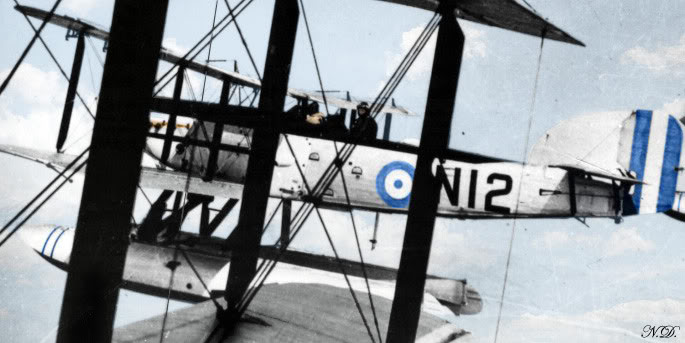

The prototype of the Fairey III was the N.10 floatplane, which was designet and built in 1917 by Fairey Aviation
to meet Admiralty Specification N.2(a) for a carrier-based seaplane for the Royal Naval Air Service during the First World War. It first flew from the Port Victoria seaplane station on theIsle of Grain, Kent on 14 September 1917.
Fallowing tests both as a floatplane and with a conventional wheeled undercarriege, production orders were placed
for two versions both powered by the Maori, the IIIA and IIIB, with 50 and 60 aircraft planned, respectively.
The Fairey IIIA was a reconnaissance aircraft intended to operate from aircraft carriers,
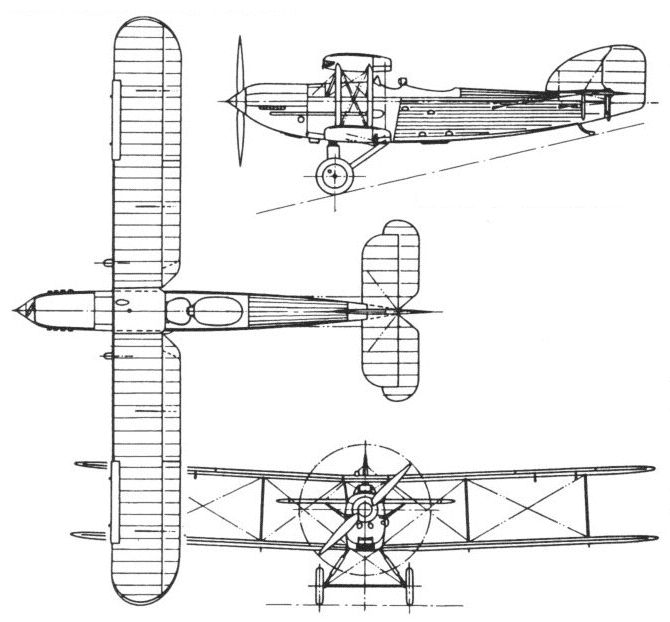
The IIIA and IIIB which was powered by the Rolls-Royce Eagle VII engine saw limited service towards the end of the war.
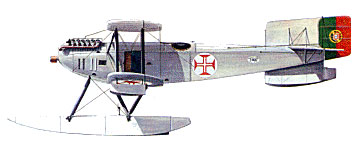
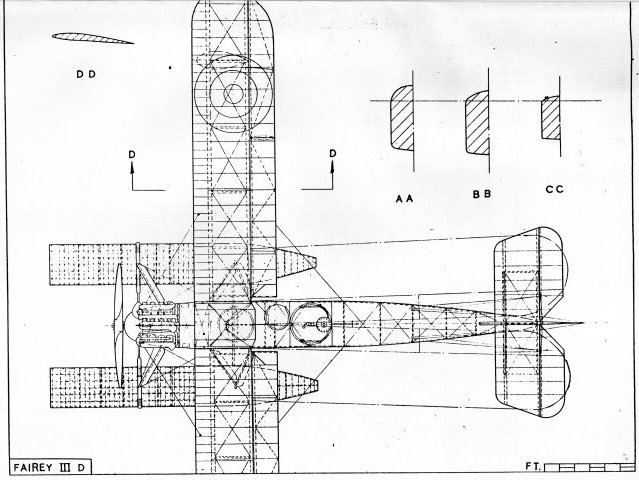
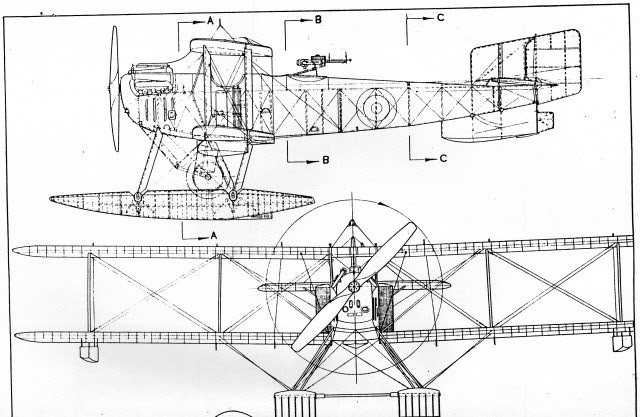
The IIID entered Fleet Air Arm Service in 1924, operating from shore bases, aircraft carriers and floats until
repleced by the IIIF in 1930. The Napier Lion powered IIIF entered service with the RAF in Egypt and with
Fleet Air Arm Catapult flights in 1927 and with the Royal New Zealand Air Force shortly after. The RAF used the IIIF to
equip general purpose squadrons in Egypt, Sudan , Aden and Jordan, where its ability to operate from both wheels
and floats proved useful, while the contemporary Westland Wapiti carried out similar roles in Iraq and India. As such IIIFs were used for colonial policing as well as taking part in further long distance flights. The RAF also used the IIIF to
finally replace the Airco DH.9A in the home based Day-Bomber role in the absence of sufficient long range flying boats
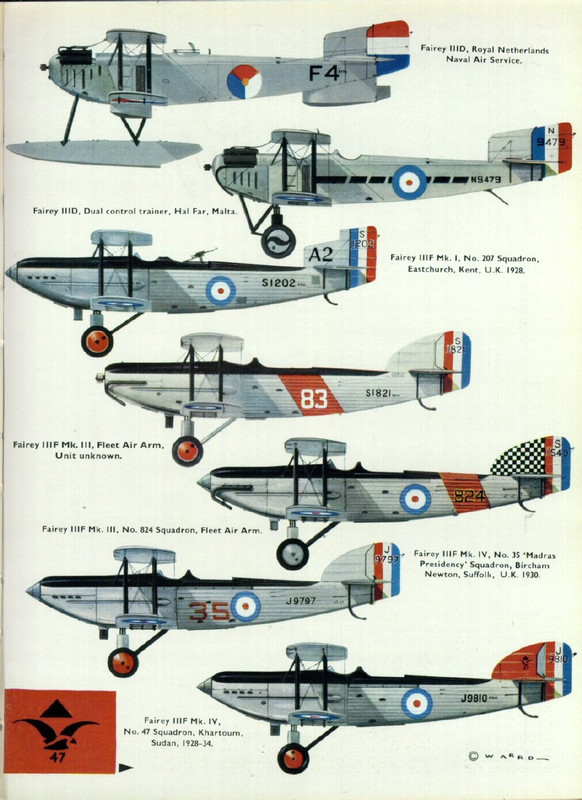
for martime patrol duties by 202 Squadron from Hal Far Malta. In the Fleet Air Arm , the IIIF repleced the IIID as a
spotter-reconnaissance aircraft, operating on floats from the Royal Navy's cruisers and battleships and with wheels ,
from the aircraft carriers HMS Furious, Eagle, Courageous, Glorious and Hermes. The IIIF remained in front line service
well into the 1930s, with the last front line RAF Squadron, 202 Squadron, re-equipping with Supermarine Scapas in
august 1935 and the final front line Fleet Air Arm squadron, 822 Squadron retained the IIIF until 1936. The IIIF remained in use in second line roles, and despite being declared obsolete in 1940, some were still in use as target tugs as late as 1941.
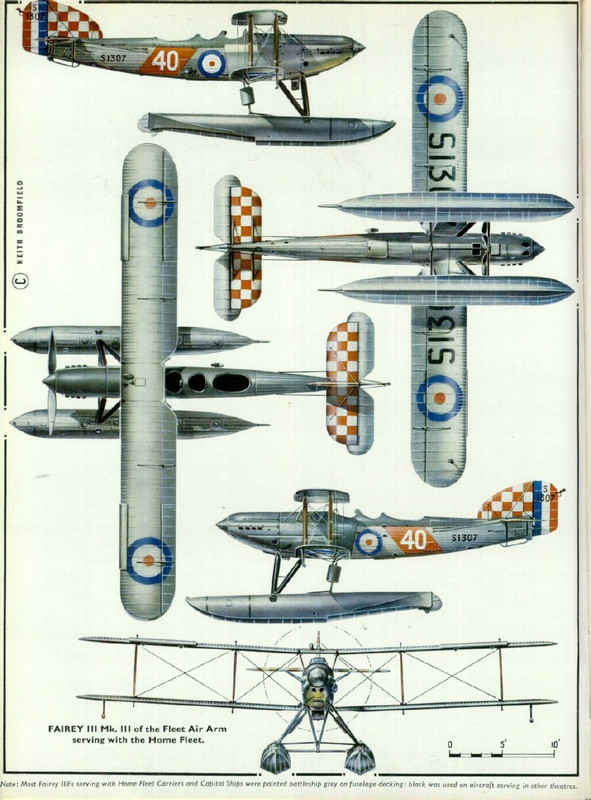
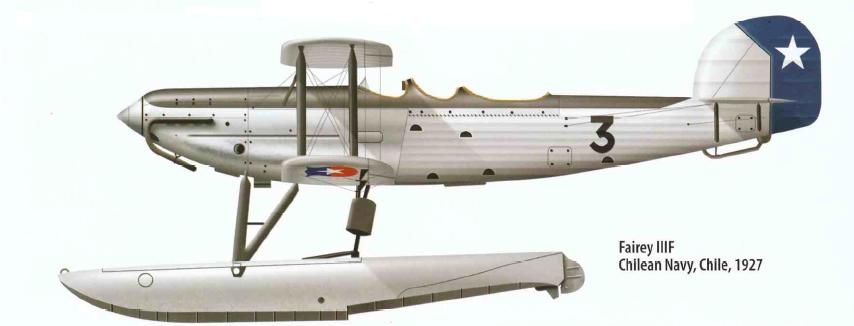
Variants
Fairey N.10 The first Fairey III prototype. Fairey IIIA Two-seat reconnaissance biplane, powered by a 260 hp (190 kW) Sunbeam Maori II piston engine; 50 built.
Fairey IIIB Three-seat patrol, bomber seaplane, powered by Sunbeam Maori II piston engine; 30 built.
Fairey IIIC Two-seat reconnaissance, bomber and general-purpose seaplane, powered by a 375 hp (280 kW) Rolls-Royce Eagle piston engine; 36 built.
Fairey IIID Two-seat general-purpose biplane, powered by a 375 hp (280 kW) Rolls-Royce Eagle or 450 hp (336 kW) Napier Lion piston engine; 227 built.
Fairey IIIE Designation sometimes used for Fairey Ferret radial-engine reconnaissance and general purpose aircraft. Three built.
Fairey IIIF Two-seat general-purpose biplane or three-seat spotter-reconnaissance biplane, powered by a Napier Lion piston engine.
Fairey IIIF I First production version of the Fairey IIIF. Three-seat spotter-reconnaissance biplane, powered by a Napier Lion VA piston engine, of composite wood and metal construction. 55 built.
Fairey IIIF II Three-seat spotter-reconnaissance biplane, powered by a Napier Lion XIA piston engine, of composite wood and metal construction; 33 built.
Fairey IIIF III Three-seat spotter-reconnaissance biplane, powered by a Napier Lion XIA piston engine, with a fabric-covered all-metal structure; 291 built.
Fairey IIIF IV Two-seat general purpose biplane for the RAF, in both composite construction and all-metal versions. Powered by a Napier Lion XIA piston engine; 243 built.
Fairey IIIF Mk V The original designation of the Gordon. Fairey IIIF Mk VI Original designation of the Seal. Queen IIIF Radio-controlled gunnery training aircraft; Three built.
Fairey IIIM Civil version; three built.
Fairey F.400 The first IIID (manufacturers serial number F.400) for the Portuguese Navy was delivered as a special long-range variant with an extended wing-span of 61 feet.
It was also referred to as the Fairey Transatlantic and given the name Luzitania when it was used for an attempt to fly across the South Atlantic in 1922, stopping at Las Palmas, São Vicente,
Cape Verde before being lost making a refuelling stop at the Saint Peter and Paul Rocks.
Operators
Australia Royal Australian Air Force - IIID (Six originally ordered by the Royal Australian Navy but transferred to the newly formed air force)
Argentina Argentine Naval Aviation - Purchased six IIIF MkIIIM (Special) powered by 450 hp (336 kW) Lorraine Dietrich Ed12 engine in 1928. They entered service in 1929. The remaining aircraft were re-engined with Armstrong Siddeley Panthers in 1935,
with the last aircraft being retired in 1942.
Canada Royal Canadian Air Force - One IIIC aircraft
Chile Chilean Air Force - IIIF
Chilean Navy - IIIF
Egypt Egypt bought a single IIIF in 1939.
Greece Greek Air Force
Greek Navy - IIIF
Ireland Irish Air Corps - purchased a single IIIF MkII in 1928, being destroyed in a crash in 1934.
Netherlands Netherlands Naval Aviation Service - IIID
New Zealand Royal New Zealand Air Force - New Zealand purchased two IIIF MkIIIMs in 1928, adding another in 1933, with one remaining in use in 1940.
Portugal Portuguese Air Force
Portuguese Naval Aviation - IIID
Soviet Union IIIF (1 aircraft)
Sweden Royal Swedish Navy - IIID
United Kingdom Royal Air Force - IIIA, IIIB, IIIC, IIIF No. 8 Squadron RAF
No. 14 Squadron RAF
No. 22 Squadron RAF
No. 24 Squadron RAF
No. 35 Squadron RAF
No. 45 Squadron RAF
No. 47 Squadron RAF
No. 202 Squadron RAF
No. 203 Squadron RAF
No. 207 Squadron RAF
No. 219 Squadron RAF
No. 229 Squadron RAF
No. 230 Squadron RAF
No. 267 Squadron RAF
Fleet Air Arm - IIID, IIIF 820 Naval Air Squadron
822 Naval Air Squadron
823 Naval Air Squadron
824 Naval Air Squadron
825 Naval Air Squadron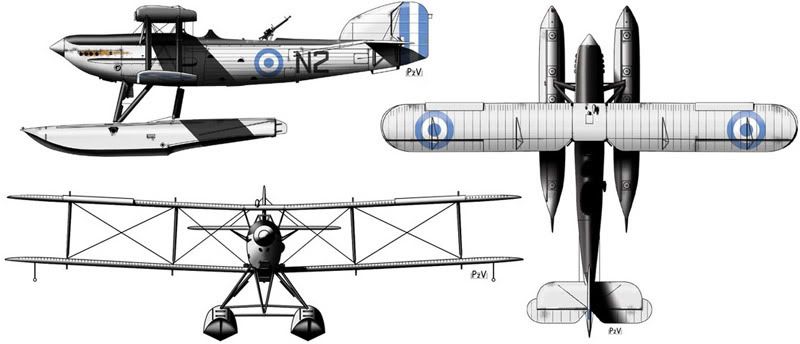
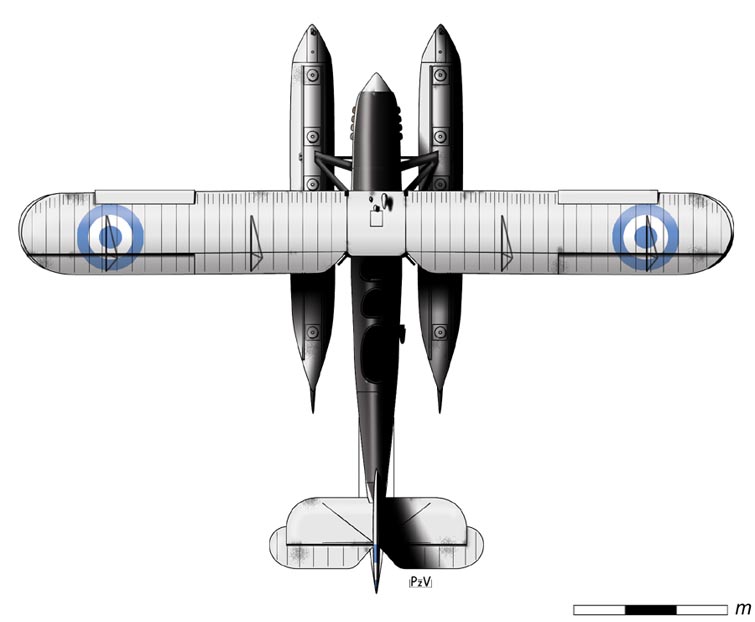
Quote:Fairey 3Ds were used by Portugal and were to be found in service as far away as Macau. 1922 saw an enlarged version of the Fairey 3D named 'Lusitania' start the first aerial crossing of the South Atlantic by two Portuguese Admirals Gago Coutinho and Sacadura Cabral who invented the aerial sextant and wished to prove that their invention was a viable device. The Fairey 3D (No 17 Santa Cruz) that stands today in the Museu de Marinha in Lisbon is purported to be the aircraft that completed the crossing. The crossing took three aircraft, Lusitania (built to complete a 1000 mile leg of the journey) was destroyed at San Pedro Rocks whilst landing in rough seas for a refuelling stop. A Fairey 3F was shipped out to the point of Lusitania's fate and flew further down route where engine failure caused a crash destroying the aircraft and the Fairey 3D - Santa Cruz - (shipped to the next staging post) flew back to the site of the 3F crash and then continued on to Rio de Janeiro. Lusitania was 'stretched' to accommodate aditional fuel tanks in the original pilot's cockpit in the centre section and in the aircraft's floats. The Pilot was moved aft to the observers cockpit and the 'observer' was moved rear to the gunner's position. The wing span went from the standard 45ft span to 64ft span with 3 bays per wing. Fuel was pumped from the floats by wind driven impeller pumps some parts of which can be seen in the Museum along with other parts of Lusitania recovered from the crash site. The two Admirals survived both accidents and flew the entire journey. Their achievement is considered an extremely important part of Portuguse history and is widely taught in schools. The Fairey 3D Santa Cruz was refurbished in the museum in the late 90's by a team from the UK - myself included and some Portuguese enthusiasts. The then Portuguese Defence Minister officially started the overhaul when I took him up to the propellor hub and invited him to remove the retaining nut. Rolls Royce kindly overhauled the Rolls Royce Eagle engine but not to an airworthy standard as the crank case was found to be cracked. There nust have been different versions of the same Mk because the 3F used as the second aircraft had a 64ft span top wing and a 45ft span bottom wing. This was one of the most interesting jobs I have had the pleasure of being involved with.
Specification
MODEL IIIF Mk IIIB/M
ENGINE 1 x Napier Lion XIA, 425kW
WEIGHTS
Take-off weight 2858 kg 6301 lb
Empty weight 1779 kg 3922 lb
DIMENSIONS
Wingspan 13.94 m 46 ft 9 in
Length 10.82 m 36 ft 6 in
Height 4.26 m 14 ft 0 in
Wing area 41.2 m2 443.47 sq ft
PERFORMANCE
Max. speed 209 km/h 130 mph
Ceiling 6095 m 20000 ft
ARMAMENT 2 x 7.7mm machine-guns, 220kg of bombs
TECHNICAL DATA: Fairey IIID
DESCRIPTION:
Three-seat survey and spotter-reconnaissance seaplane. Wooden structure, fabric covered.
POWER PLANT:
1 X 375 hp Rolls Royce Eagle VIII.
DIMENSIONS:
Span : | 14.05 m (46ft 1.25 in) | Length 11.28 m (37ft) | Height 3.44 m (11ft 4in) |.
WEIGHTS:
Empty : | 1473 kg (3248lb) | loaded 2231 kg (4918lb).
PERFORMANCE:
Max speed : | 171 km/h (106mph) | Climb 7 mins to 5,000ft (1524 m)| Range 885 km (550 miles)
Service ceiling : | 17,000ft (5182 m)
ARMAMENT:
1 X 0.303 Vickers gun forward and one Lewis gun aft.
Specifications (Fairey IIIF Mk.IV)
Data from Fairey Aircraft since 1915
General characteristics
Crew: two or three
Length: 36 ft 9 in (11.20 m)
Wingspan: 45 ft 9 in (13.95 m)
Height: 14 ft 2 in (4.32 m)
Wing area: 439 ft² (41 m²)
Empty weight: 3,855 lb (1,752 kg)
Loaded weight: 6,041 lb (2,746 kg)
Powerplant: 1 × Napier Lion XI 12-cylinder W-block inline engine, 570 hp (423 kW)
Performance
Maximum speed: 120 mph (104 kn, 192 km/h) at 10,000 ft (3,050 m)
Range: 1,520 mi[40] (1,313 nmi, 2,432 km)
Service ceiling: 20,000 ft (6,098 m)
Rate of climb: 833 ft/min (254 m/min)
Wing loading: 13.8 lb/ft² (67.2 kg/m²)
Power/mass: 0.094 hp/lb (0.15 kW/kg)
Armament
Guns:
1 × forward firing .303 in (7.7 mm) Vickers machine gun
1 × .303 in (7.7 mm) Lewis Gun in flexible mount for observer
Bombs: Up to 500 lb (227 kg) bombs can be carried under wings
Piotrek
 Author
Topic: Fairey III (Read 5106 times)
Author
Topic: Fairey III (Read 5106 times)


